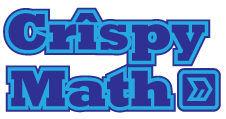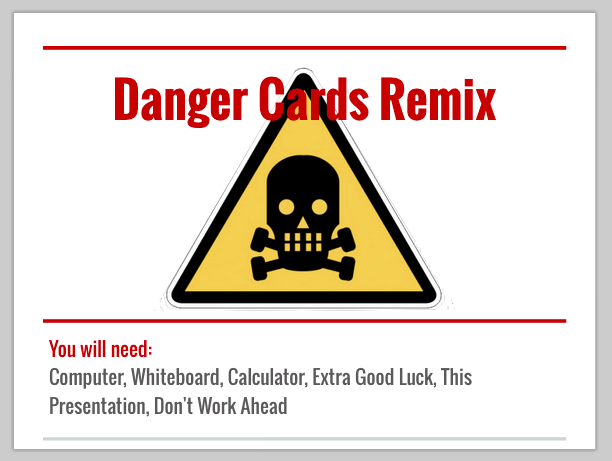Crocodile Dentist
/I get great review game ideas just browsing toy stores (and way way too many games). Crocodile Dentist was born this way. The game is sometimes hard to find, but seems to currently be available on Amazon.*
Gameplay is in groups, and nearly identical to Danger Cards, a review game I wrote about earlier. But in this one the croc is the star of the show, although the kids still do lots of math.

Set Up
You will need the crocodile (obviously) as well as the Keynote presentation I use for the classes. I also print out worksheets for each round. Below is also the link to the Pages worksheet set I made for the lesson I ran this week. Most of the problems are snapped from Sullivan's Algebra with Trigonometry book.
Download Keynote
Download Pages WS

Game Play
Here are the rules straight from the presentation that I share with the kids, I've added a bit of extra explanation as well.
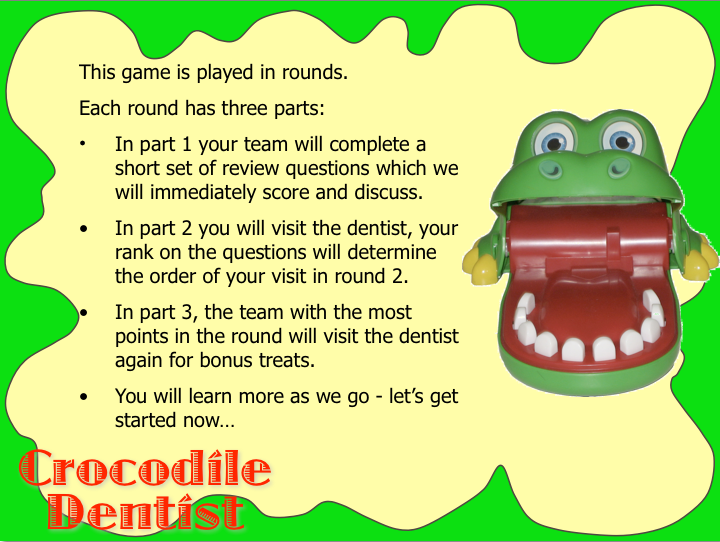
At this point I jump immediately into the math by having the students work through the first page of questions. Teams hand in their worksheets as soon as they are done. Once most of the teams have handed in their sheets I cajole the final team into turning in theirs. During this part of the game I usually wander around the room making sure everyone is participating.
Once all the sheets are turned in I score them really fast and we discuss any questions that seemed universally unclear. I remind the kids before the game begins that this is primarily about review. Each team gets points for each right answer. The team with the most points goes first in the Croc Round and then play continues clockwise from group to group. (I've tried other turn systems but this seems to be the easiest for me to not mess up during the game.)
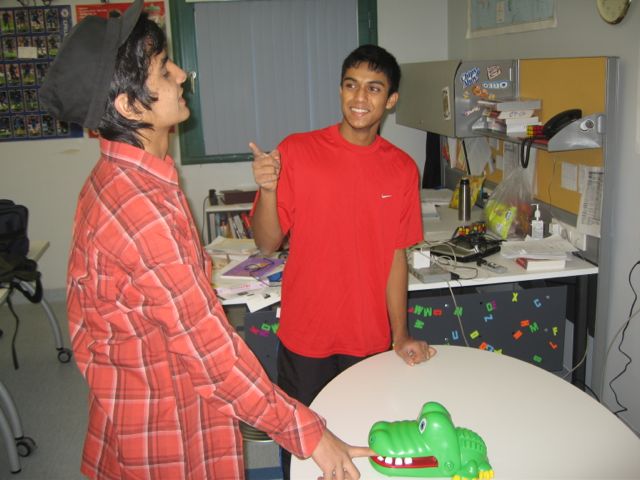
The Dentist Round works exactly as described on this slide. This is always intense because the winner of the round will nearly always be suspenseful, although the teams who were successful on the problems will have an advantage. To keep everything moving I usually only let one kid at a time come up to the table where the croc is.
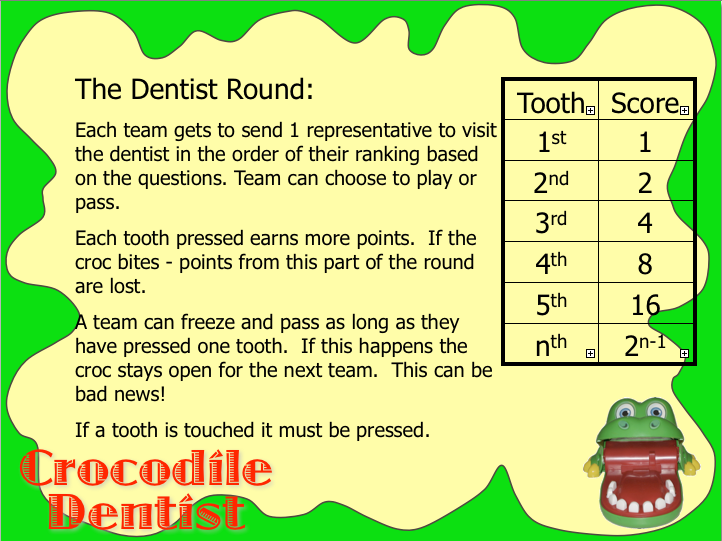
The bonus round immediately follows the dentist round. The winning team plays for candy.
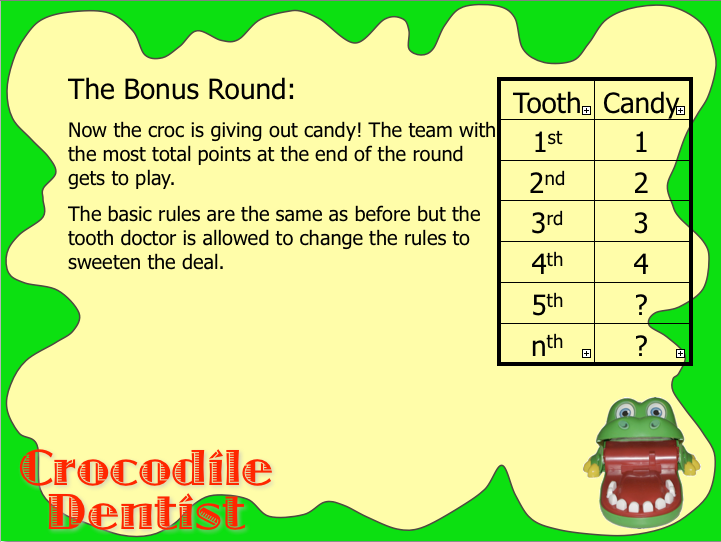
The round is nearly always a blast, because over and over again kids will take "one too many trips to the well" and not get any candy! It's hilarious. Further, if they manage to push four teeth successfully I usually start offering them deals encouraging them to press their luck (and get eaten) good times.
And that's it. Once the candy round is done we jump into round 2 and repeat. If you want you can keep score and have a grand champion at the end, I sometimes do this but it's not really needed. At the end of class I direct students to a Google Doc where they can access all the problems and solutions for additional review. This review game is a blast. If you give it a shot in your classroom let me know how it goes.
Links to Amazon.com are affiliate links when reasonable.
